Athlete's foot is a common name for several types of dermatomycosis, which differ in the location and type of fungus. There are four main groups of foot mycosis:
- skin of interdigital spaces;
- Foot fingers;
- toenails (onychomycosis);
- skin of the lower extremities.
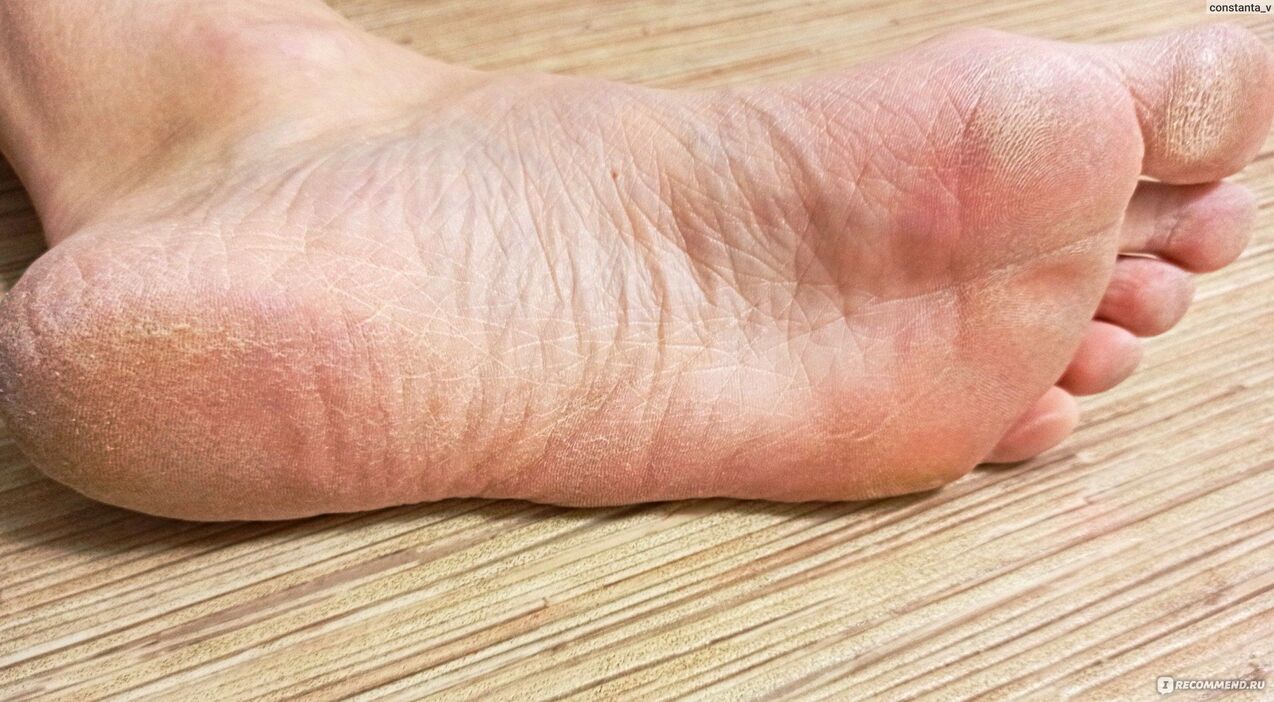
What is athlete's foot?
If you believe the statistics, foot fungus is diagnosed in almost twenty percent of the population in our country. Fungal infections live freely in the environment, and we sometimes do not even realize that we may be carriers of the disease.
Under certain favorable conditions, some of the five hundred species of mushrooms that exist in nature experience a "revival moment". They multiply rapidly, forming numerous colonies and spreading spores to new areas of the skin.
Mushroom waste is toxic. As a result of intoxication, the whole body can suffer.
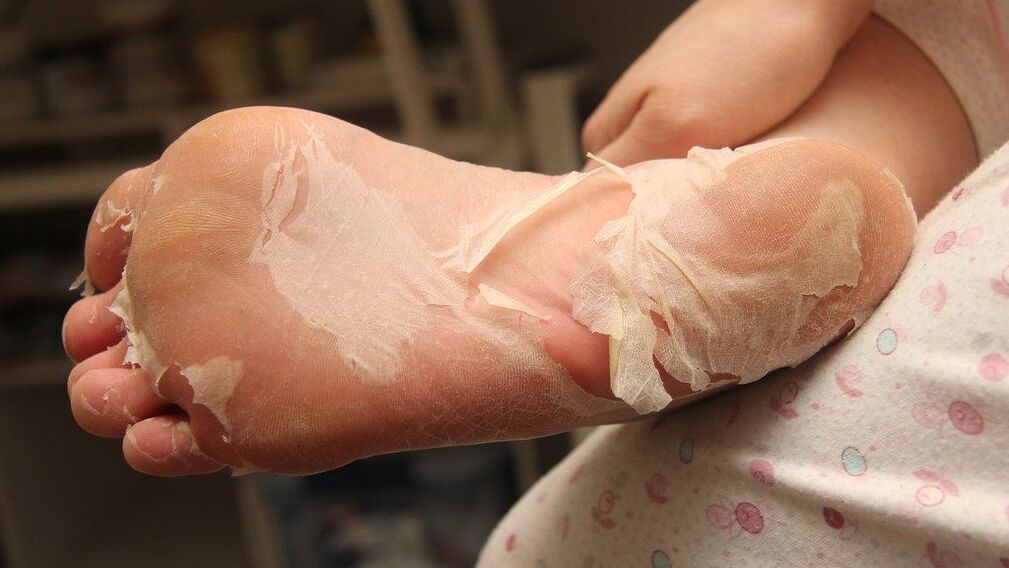
Mycosis of the feet is caused by microscopic fungi:
- dermatophytes;
- Yeast;
- moldy;
- candida.
Prerequisites for the formation of foot fungus:
- swimming pool, sauna, bath, gym, visiting any place where you have to move barefoot and there is also a risk of illness during work;
- using someone else's shoes;
- dermatological diseases (neurodermatitis, psoriasis, eczema);
- organic chronic diseases;
- diabetes mellitus (diabetic foot) and other endocrine diseases;
- flat feet with deformity of the big toe;
- increased sweating of the skin of the feet (hyperhidrosis);
- decreased body defenses, especially in people with nail fungus (onychomycosis);
- uncontrolled use of antibiotics, hormones and antiallergic drugs;
- damage to the skin of the feet in the form of cracks, corns and calluses.
What does athlete's foot look like?
The disease manifests itself depending on the type of fungus that "infects" the skin of your feet and its location.
Very often, the symptoms of the disease (peeling, layering of scales, severe itching) occur with the addition of an inflammatory process due to scratching.
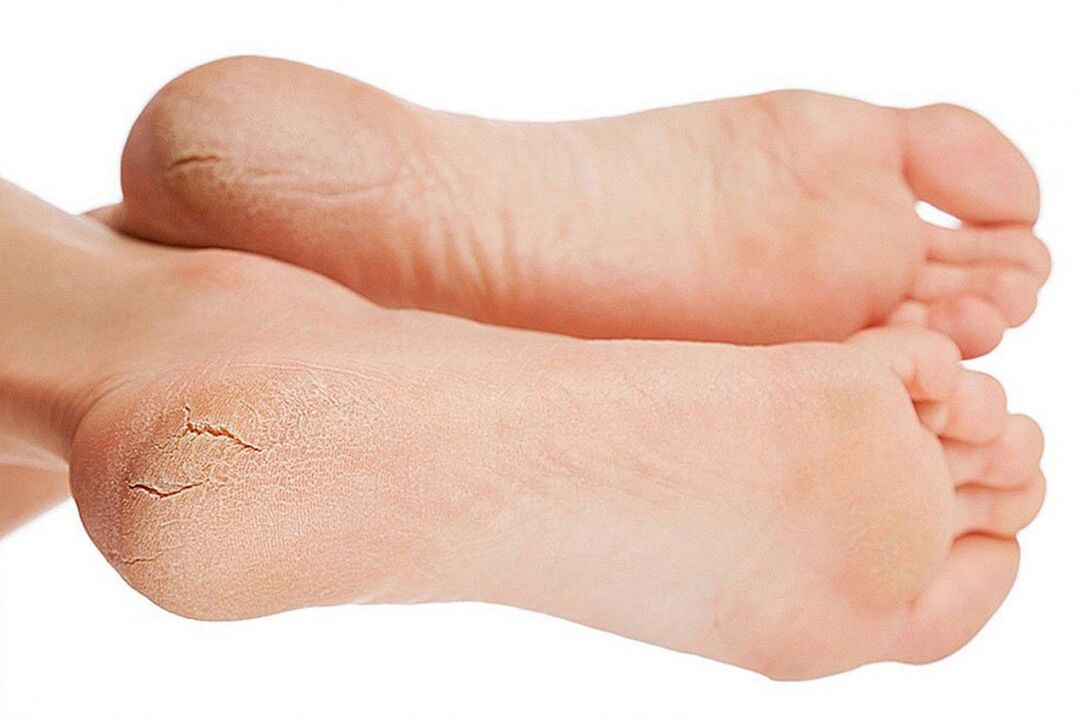
Fungal infection of the skin and nails of the foot has two forms - acute and chronic. Recovery in the acute form usually occurs within a few days (taking into account the adequacy of prescribed drugs). The chronic form is not completely cured, it varies between relapses and remissions. Its treatment is aimed at alleviating the symptoms of the disease.
It is important! As soon as you suspect the first signs of foot fungus, run to the doctor! Do not self-medicate, delaying the spread of infection. The longer you delay a visit to a specialist, the longer the treatment will be.
Fungus between the toes
The infection, as a rule, first affects the interdigital folds (especially the densest among them - between the third and fourth fingers).
Symptoms of interdigital foot fungus:
- thickened skin is dry;
- furrows and even calluses are formed;
- the skin of the feet cracks and peels;
- pain and debilitating itching appear.
It happens that the fungus hides and manifests itself only with the formation of small cracks between the fingers, slight peeling and slight itching. The patient does not consult doctors for a long time, and only when crying occurs, the patient begins to worry.
Exudative (wetting) form of athlete's foot:
- intertriginous, occurring as diaper rash;
- dyshidrotic - with the appearance of blisters;
- mixed - interginous-dyshidrotic.
Vesicular foot fungus or dyshidrotic mycosis is considered the most dangerous form of fungal infection.
It is characterized by the formation of painful vesicles (large blisters) that coalesce and form large, erosive areas with no skin covering. As it develops, erosion is constantly increasing in volume. The fluid inside the blisters is highly contagious. You can infect all family members at once.
A foot that is almost skinless also carries the risk of "catching" a severe purulent infection. Recovery is delayed for at least three to four months. The site of localization is usually the skin of the bottom of the foot, a little less often - the skin between the toes and less often - the skin on the surface of the heel.
Fungus on toes
An untreated fungus "crawls" from the interdigital space to the nearest fingers. In principle, all the symptoms characteristic of mycotic infection of the interdigital folds are also characteristic of the skin of the toes - severe itching, etc. They are very disturbing.
As a result of endless scratching, the skin of the fingers thickens, becomes inflamed and turns bright red. Continuous swelling, pustules and blisters appear. A pustular rash is usually caused by a bacterial infection.
Almost always, the process that occurs on the skin of the fingers or between them spreads to the nails.
Onychomycosis or nail fungus
The main causative agents of the disease are dermatophytes and at least Candida fungi. The appearance of the nail and feelings with onychomycosis are not the most pleasant.
Symptoms of the disease:
- deformation and separation of the nail;
- pain when walking;
- the appearance of cloudiness and yellowish color on the nail;
- significant thickening of the nail plate;
- destruction of nails.
It is important! Onychomycosis contributes to the transition of any fungal disease into a chronic form. Do not delay your visit to the doctor, because fungal spores can spread further to the extremities: legs, thighs and even hips, abdomen and chest.
Athlete's foot: causes and symptoms of the disease in children
Fungus occurs on children's feet for several reasons:
- endocrine disorders;
- uncomfortable, ill-fitting faux leather shoes;
- malfunction of the gastrointestinal tract;
- dirty, untrimmed toenails;
- neglecting the rules of personal hygiene when visiting baths and gyms;
- straight legs.
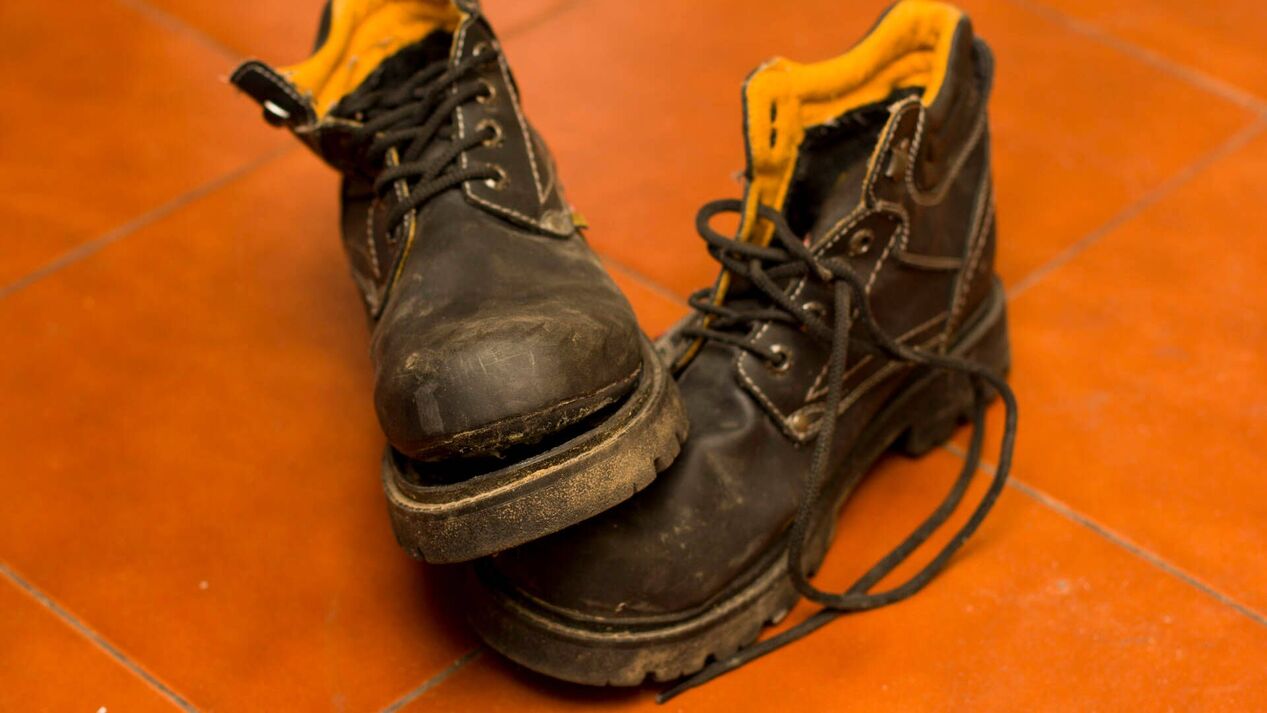
Most often, the fungus affects the skin of children in the spaces between the fingers. Symptoms: peeling, thickening of the nail plate tissue, severe itching. Small erosions and ulcers, inflammation of the skin of the foot appear.
Diagnosis of foot mycosis
Correct treatment of mycosis of the feet, as well as its diagnosis, can only be carried out by a dermatologist.
What should a doctor do when diagnosing athlete's foot:
- detailed examination of the patient's foot;
- collection of anamnesis (symptoms of the disease, as well as the presence or absence of chronic diseases, an inquiry is made about heredity);
- scraping from the affected skin or cutting a deformed piece of nail;
- a special test to confirm the presence of a fungal infection in the body as a whole;
- planting the material in a nutrient medium (if necessary);
- skin biopsy (a small part of the affected skin is cut) for examination under a microscope (performed in exceptional cases);
- General and biochemical blood test.

To properly test, you will need:
- do not use antifungal agents without a doctor's prescription;
- do not treat the affected skin with anything at least three days before the test;
- It is recommended to use only baby soap without additives;
- do not perform manipulations to remove nails for a week;
- do not take medicine;
- if possible, do not smoke;
- Do not drink coffee, lemonade or alcohol before the blood test.
How and with what to treat mycosis of the foot
The treatment prescribed by the doctor is usually complex, consisting of tablets and topical products (creams, ointments, sprays). Treatment of foot fungus with folk remedies should not be neglected. They will be able to speed up the healing process of lesions. It is impossible to name an effective remedy that can be used for foot fungus, because during treatment it is important to achieve an antimycotic effect, eliminate accompanying pathologies and improve blood supply to the feet.
The following have an excellent therapeutic effect:
- A broad-spectrum antifungal is an excellent remedy for foot fungus. It is the basis for many antimycotic drugs. For local use only. It is effective as an ointment, cream, lotion, aerosol. The ointment should be applied in a thin layer on clean, dry soles three times a day. It is better to use after one or two months of treatment.
- Product (lotion) to restore and protect the nail plate during fungal infection. This spray has proven to be effective against athlete's foot. It mainly serves to prevent fungal diseases. It contains undecilenic acid, which forms immunity against nail fungal diseases. The spray is very easy to apply. It is used to disinfect the inner surface of shoes. However, a patient with onychomycosis should still be treated using not only this, but also other antimycotic drugs.
- Antifungal drug for systemic use.""Yere" kills all kinds of fungi. It is used in the form of tablets, creams, sprays and solutions for oral administration. For adults, tablets are prescribed for two weeks, taken twice a day. The cream for fungus on the skin of the foot is rubbed into the affected areas twice a day. The duration of treatment is oneit can be from a week to a month and a half.
- Antifungal antibiotic. The drug inhibits the spread of fungi. Available as tablets, oral suspension and ointment. The ointment is indicated for use only when the nail is not affected by Candida fungi. .Tablets are taken for three months. The first month - once a day, the second and third - every day. The dosage is prescribed by the doctor. The medication wears off as healthy nails grow back.
- Antimycotic drug. It has a high degree of activity against all groups of mycotic organisms that can cause athlete's foot. It is available in suppositories and tablets, but is used to treat fungal infections of the intestines and female genital organs. It is recommended to apply the ointment once or twice a day for up to a month.
How to treat toenail fungus at home
It is possible and necessary to treat a fungal "infection" at home, but only after consulting a doctor and taking the test results and an individually selected set of special medicines with you. Traditional medicine also treats athlete's foot, but is usually only used as an adjunctive treatment:
Baking soda is used as an emollient for athlete's foot (for painful nails). Put your feet in soda solution (prepared at the rate of one teaspoon per liter of hot water) for 7-9 minutes. From a cotton pad, we form a plate corresponding to the size of the nail. Soak a cotton pad in a 3% solution of hydrogen peroxide and put it on a soft nail. Wrap the compress in cling film or put it on your fingertip. Keep the cotton swab on the nail for 45-60 minutes. We repeat the manipulation twice a day. If a burning sensation occurs, wash your finger with water. You will see the effectiveness of the procedure within four days.
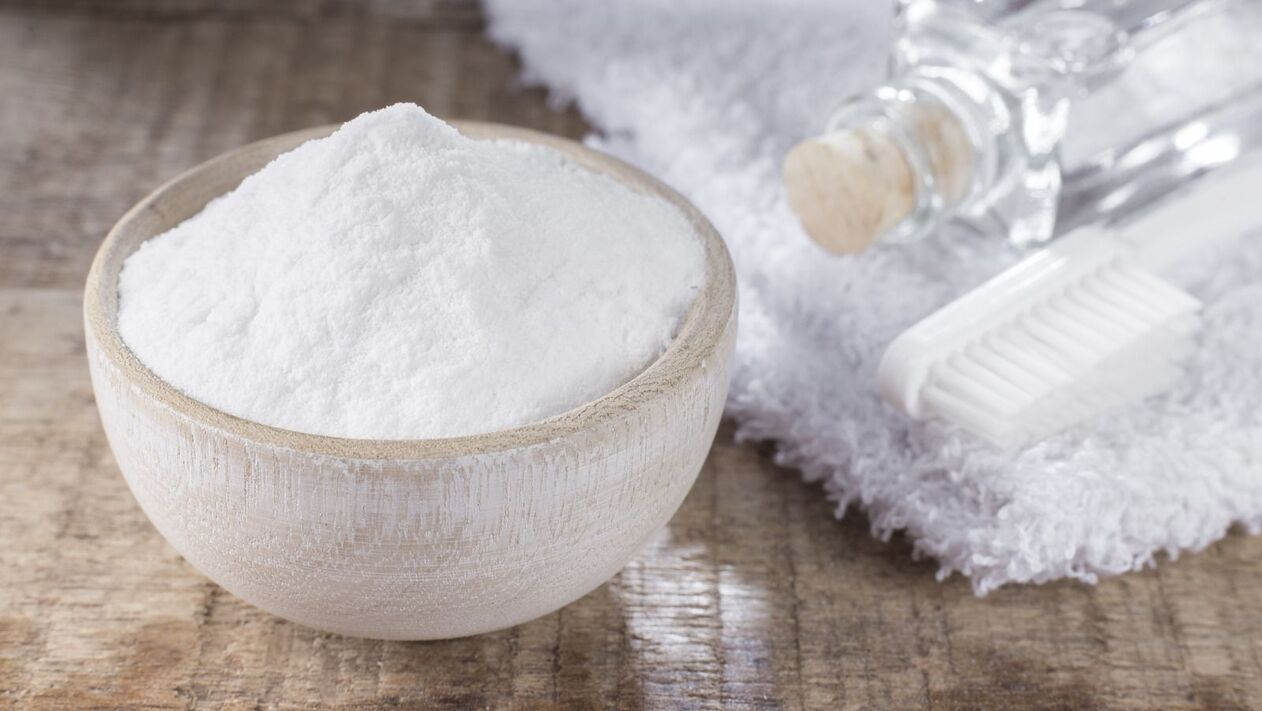
Treating foot fungus with wine vinegar is a simple and inexpensive remedy. At night, wash your feet with warm, soap-free water and soak them in a basin with a strong solution of wine vinegar. After five minutes, wipe the feet and put them in socks soaked in this solution. The procedure has a disinfecting effect. A simple recipe for home treatment is a bath with instant coffee. Brew strong coffee in the required amount of water. The drink is allowed to cool slightly and the legs are steamed there. Regularly - twice a day - the unpleasant smell from the feet is eliminated and mycosis is "expelled".
Rules for taking care of personal belongings during illness:
- slippers must have a closed toe and heel;
- you can't walk barefoot;
- shoes should be treated with antifungal agents twice a day, for example: 40 percent solution of acetic acid;
- wash personal items separately from others;
- Wash baths, basins, shower cabins with disinfectant solutions after using them;
- Daily wet cleaning of the apartment and ventilation of the room are required;
- daily change of socks;
- After recovery, get rid of old underwear, shoes and medications.
Prevention of foot and nail fungus
"How not to get sick? " to the question. the answers are simple:
- observe the rules of personal hygiene;
- stick to a dairy-vegetable diet, eat more vegetables and fruits;
- give up bad habits;
- manage your emotional state, avoid stress;
- doing physical education and sports in the fresh air.















